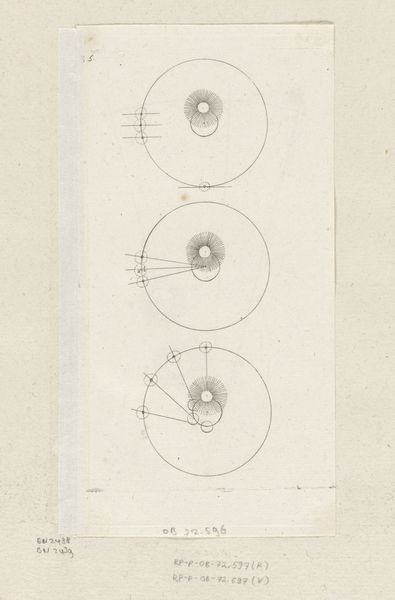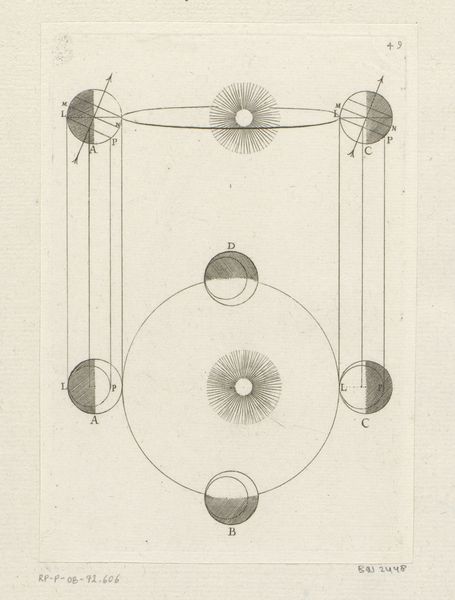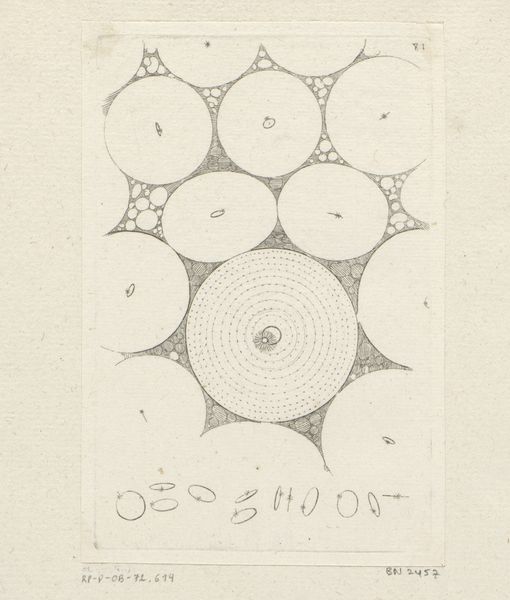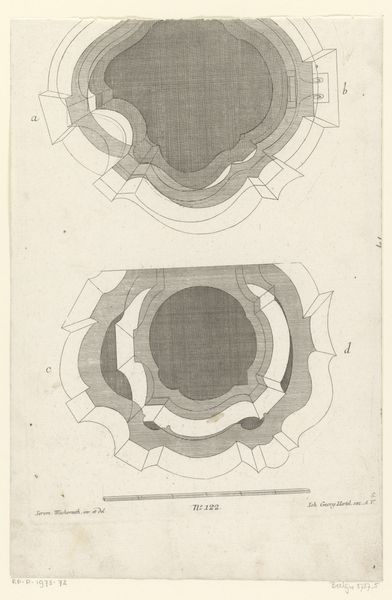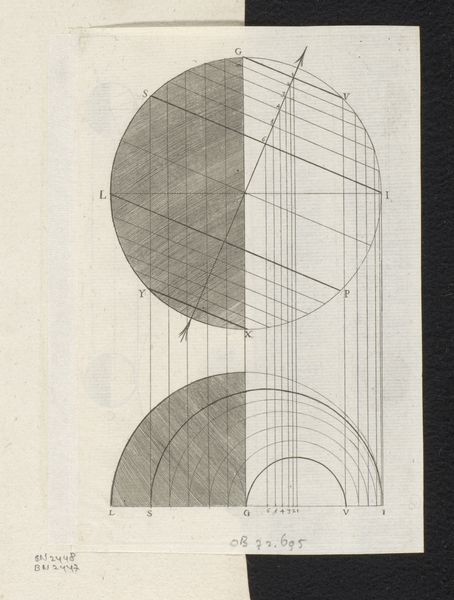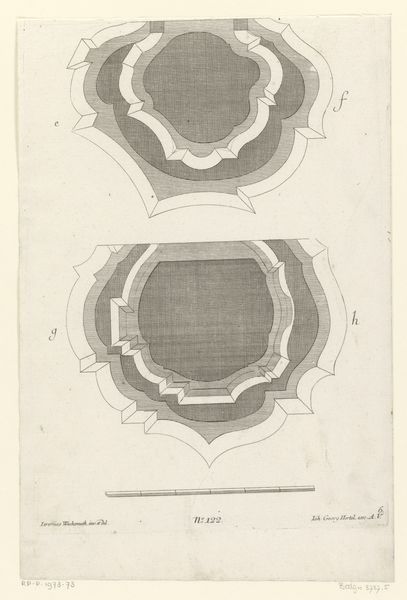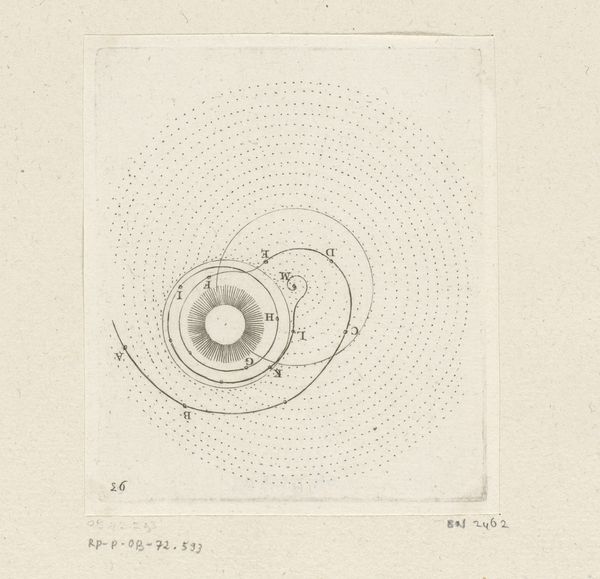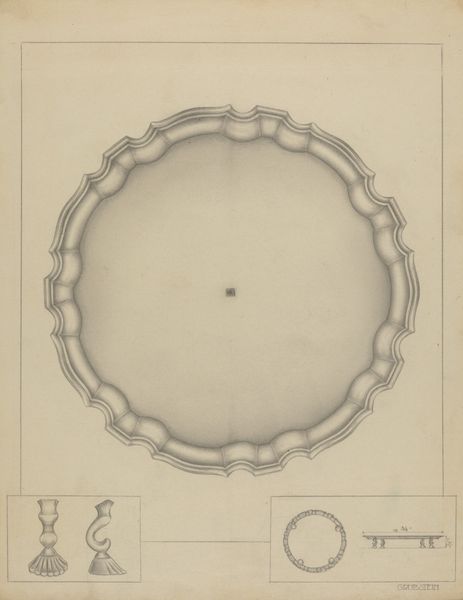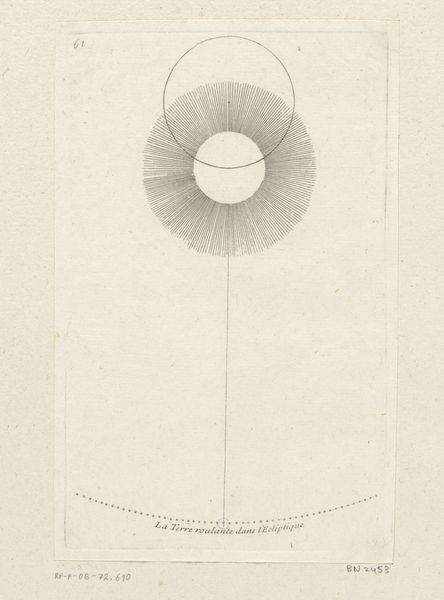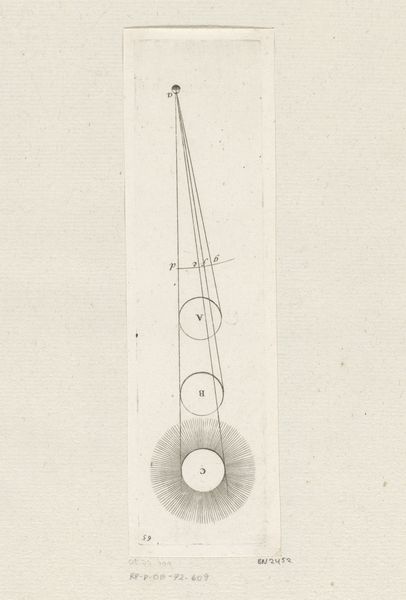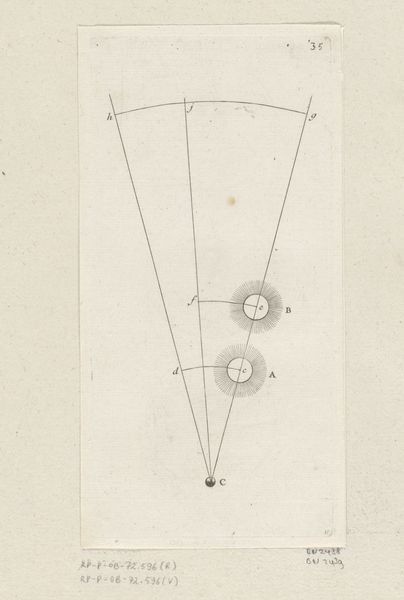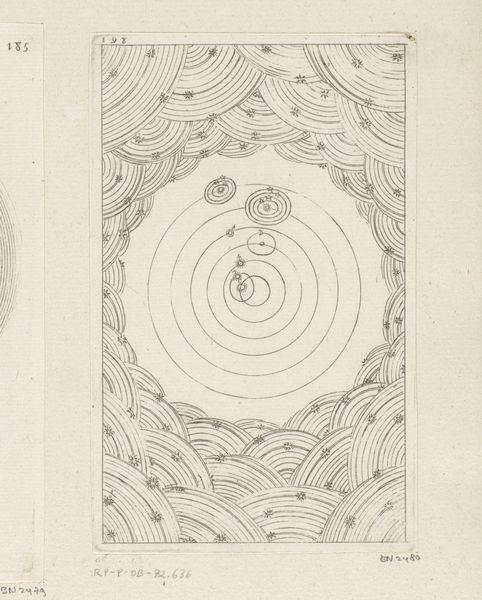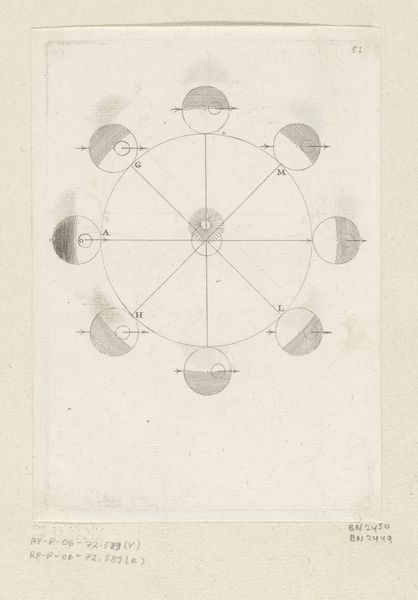
print, etching
#
aged paper
#
baroque
#
shading to add clarity
# print
#
etching
#
old engraving style
#
hand drawn type
#
etching
#
geometric
Dimensions: height 160 mm, width 100 mm
Copyright: Rijks Museum: Open Domain
Curator: So, what jumps out at you about this etching, seemingly called "Interactie tussen verschillende banen van hemellichamen"—that translates to "Interaction Between Different Orbits of Celestial Bodies"—created around 1706 by Sébastien Leclerc I, housed here at the Rijksmuseum? It looks more like a detailed blueprint than anything I'd hang on my wall, but it still manages to be sort of elegant, doesn’t it? Editor: Elegant and profoundly strange. My first impression is…organized chaos. Or perhaps controlled dreaming. These overlapping circles, rendered with such meticulous detail, almost hum with an unseen energy. There is a semiotic play with voids; I see absence implying volumes, almost inviting me to reconsider positive and negative spaces as conceptual metaphors. Curator: Right? Organized chaos captures it. Leclerc was working during a time of massive shifts in understanding the cosmos. Newtonian physics was all the rage, upending old ideas, and I feel like he's grappling with this shift, visualizing these abstract, barely comprehensible concepts in this, like, almost obsessive way. What are these relationships between these orbs? And what’s causing the celestial dance? You feel like you could fall into it somehow, tracing the lines into outer space! Editor: I see an articulation of the period’s drive for a rational understanding of a subject as intrinsically mystic and incomprehensible. What strikes me, particularly, is the medium itself. Leclerc employs etching to a nearly photorealistic level, but still constrained within a certain formalism with limited contrast, so that we’re perpetually kept aware that this image is more like data or record of celestial bodies, yet striving to be considered as a visual object with an aim to achieve a certain affect on its beholder. Curator: Absolutely. There’s a tension there—this collision of art and science. He’s making art *about* science, sure, but also maybe suggesting science is, in its way, artful? Look at all the work that clearly went into making a beautiful diagram. The engraving marks add the textural feel. In that sense, science and visual objects aren't so distinct when thinking about the art's ability to evoke a viewer response. I think Leclerc anticipated people responding in an expressive way, not just a functional one. Editor: An interesting intersection, a record of where science communication becomes visual expression, even visual poetry. The aged paper itself creates another layer, reminding us of time, observation and scientific evolution. So next time someone asks what art can do, show them this – and maybe suggest they try not to fall in… Curator: Ha! Couldn't agree more. Makes you consider, even now.
Comments
No comments
Be the first to comment and join the conversation on the ultimate creative platform.
